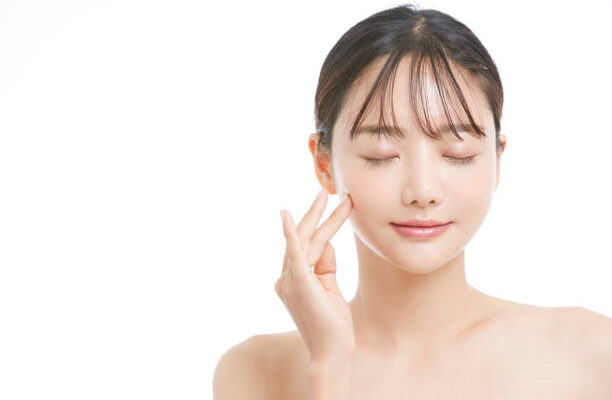The Asia-Pacific skincare market’s growth and evolution are strongly influenced by increasing consumer awareness and health consciousness, diverse demographics and skin types, and the combined effects of rising disposable incomes and urbanization.
As per a research report by TechSci Research titled “Asia Pacific Skin Care Market – Industry Size, Share, Trends, Competition Forecast & Opportunities, 2028,” the Asia Pacific Skin Care Market reached a value of USD 63,132.1 million in the year 2022 and is expected to exhibit a Compound Annual Growth Rate (CAGR) of 5.5% during the forecast period spanning from 2024 to 2028. The Asia Pacific (APAC) region is a flourishing center for the skincare industry, distinguished by its extensive and varied consumer base, cultural diversity, and an escalating focus on personal grooming and aesthetics. Over recent years, the APAC skincare market has experienced significant transformation, driven by a confluence of shifts in demographics, evolving consumer choices, technological advancements, and the impact of worldwide beauty trends.
The APAC skincare market stands as one of the largest and swiftest growing markets globally. With a population exceeding 4.6 billion individuals, this region provides a broad consumer base with assorted skincare requirements and inclinations. The market’s worth has consistently expanded, steered by factors such as rising disposable incomes, urbanization, and a burgeoning awareness of skincare regimens.
The realm of skincare products encompasses a wide spectrum, inclusive of cleansers, moisturizers, serums, sunscreens, anti-aging remedies, and more. These offerings cater to a variety of skincare requisites and concerns, spanning from hydration and safeguarding to specialized treatments. Moreover, while skincare was historically marketed towards women, there has been an escalating acceptance and demand for skincare products designed for men within the APAC region. Brands have reciprocated by launching a range of skincare lines targeted at men. Furthermore, skincare products are disseminated through diverse channels, including specialized stores, department stores, pharmacies, e-commerce platforms, and direct sales. E-commerce, particularly in nations like China and South Korea, has experienced remarkable growth.
Consumers in the APAC region exhibit diverse skin types and issues, fueling the need for customized skincare solutions. Brands have introduced products incorporating natural, organic, and specific active ingredients to address these diverse demands. Additionally, the APAC skincare market comprises a blend of both global and regional players, with several well-established brands originating from countries like South Korea and Japan. Prominent international cosmetic giants like L’Oréal, Estée Lauder, Procter & Gamble, and Johnson & Johnson have established a robust presence in the region, leveraging their global recognition and marketing strategies.
Simultaneously, regional brands have secured a substantial market share by comprehending local consumer preferences, offering innovative formulations, and capitalizing on cultural influences. South Korean skincare brands such as Innisfree, Etude House, and Amorepacific, alongside Japanese brands like Shiseido and SK-II, have achieved iconic status in the APAC region.
Browse over XX market data Figures spread through 132 Pages and an in-depth TOC on “Asia Pacific Skin Care Market”
https://www.techsciresearch.com/report/asia-pacific-skin-care-market/4980.html
Cultural influences exert a significant impact on the skincare habits and inclinations of consumers within the APAC region. The “K-beauty” phenomenon, originating in South Korea, has left an indelible mark on the global skincare industry. K-beauty is distinguished by its multi-step skincare regimens, emphasis on hydration, and innovative ingredient usage.
In a similar vein, the “J-beauty” trend, originating in Japan, places a premium on simplicity and quality. Japanese skincare products often feature cutting-edge technology, minimalistic packaging, and a steadfast commitment to safety and efficacy.
Local cultural customs also play a role in shaping skincare choices. In nations like India and China, traditional remedies and ingredients find their way into contemporary skincare products, appealing to consumers seeking a link to their heritage.
A growing awareness of health has prompted consumers to prioritize skincare as an integral facet of their overall well-being. They seek products that not only enhance their appearance but also contribute to skin health. Additionally, the APAC region is witnessing a demographic shift with a burgeoning aging population, which has propelled demand for anti-aging skincare products and treatments. Moreover, rapid urbanization has brought about lifestyle changes, including heightened exposure to pollution and increased stress levels, resulting in the demand for skincare products that address skin damage and sensitivities.
The advent of e-commerce platforms has brought about a revolution in the skincare market in the APAC region. Consumers now enjoy convenient access to a wide array of products, brands, and reviews, which has boosted online skincare sales. Social media platforms, especially Instagram, wield significant influence in promoting skincare trends and products. Beauty influencers and bloggers frequently share their skincare routines, leading to product discoveries and heightened brand visibility. Additionally, as disposable incomes rise, consumers are more willing to invest in premium skincare products boasting advanced formulations, exclusive ingredients, and innovative packaging.
The market is fiercely competitive, with numerous local and international brands vying for a piece of the market share. This competition can lead to price wars and put pressure on profit margins. Furthermore, navigating the diverse and ever-evolving regulatory landscape across APAC countries can be a formidable task for manufacturers. Compliance is of utmost importance to avoid legal entanglements and maintain consumer trust. Additionally, the high demand for skincare products has given rise to counterfeit and substandard items infiltrating the market, underscoring the importance of ensuring product authenticity for consumer safety.
The Asia Pacific skincare market is segmented based on product type, gender, sales channel, and region.
Regarding product type, the market is categorized into face care, body care, lip care, eye care, and others. Among these, face care holds a substantial share in the Asia Pacific skincare market due to the cultural significance placed on facial beauty in many APAC countries, where clear and radiant skin is associated with health, attractiveness, and overall well-being.
In terms of countries, China commands a significant share of the Asia Pacific skincare market. Its vast population, surpassing 1.4 billion individuals, provides a broad consumer base for skincare products. The diversity within this population, including varying skin types, age groups, and beauty preferences, fuels the demand for a wide variety of skincare offerings.
Major companies operating in the Asia Pacific skincare market include:
- Unilever PLC
- L’Oreal S.A.
- Shiseido Company, Limited
- The Estée Lauder Companies
- Procter & Gamble Co.
- Kao Corporation
- Colgate-Palmolive Company
- Oriflame Cosmetics Global SA
- Beiersdorf AG
- Johnson & Johnson Services, Inc.
Download Free Sample Report@
https://www.techsciresearch.com/sample-report.aspx?cid=4980
Customers can also request for 10% free customization on this report.
“The Asia Pacific skincare market represents a dynamic and ever-evolving landscape, propelled by its extensive and diverse consumer base, cultural influences, and a growing focus on personal grooming and well-being. Within this competitive market, challenges and opportunities coexist, favoring brands capable of innovation, quality maintenance, and adaptation to shifting consumer preferences. As skincare remains a fundamental component of self-care and personal health, the APAC region is poised to retain its status as a central hub for skincare manufacturers and investors in the years ahead,” explained Mr. Karan Chechi, Research Director at TechSci Research, a research-driven management consulting firm.
“The report titled ‘Asia Pacific Skin Care Market By Product Type (Face Care, Body Care, Lip Care, Eye Care, Others), By Gender (Male, Female), By Sales Channel (Supermarkets/Hypermarkets, Specialty Stores, Online, Others (Direct Sales, etc.)), By Region, By Competition Forecast & Opportunities, 2018-2028F’ has assessed the future growth potential of the Asia Pacific skincare market. It offers data and insights concerning market size, structure, and prospective growth. The report aims to provide cutting-edge market intelligence to support informed investment decisions by decision-makers. Additionally, it identifies and analyzes emerging trends, as well as crucial drivers, challenges, and opportunities within the Asia Pacific skincare market.”
Related Reports:
India Feminine Hygienic Product Market
Contact
Mr. Ken Mathews
708 Third Avenue,
Manhattan, NY,
New York 10017
Tel: +1-646-360-1656
Email: [email protected]
Website: www.techsciresearch.com



